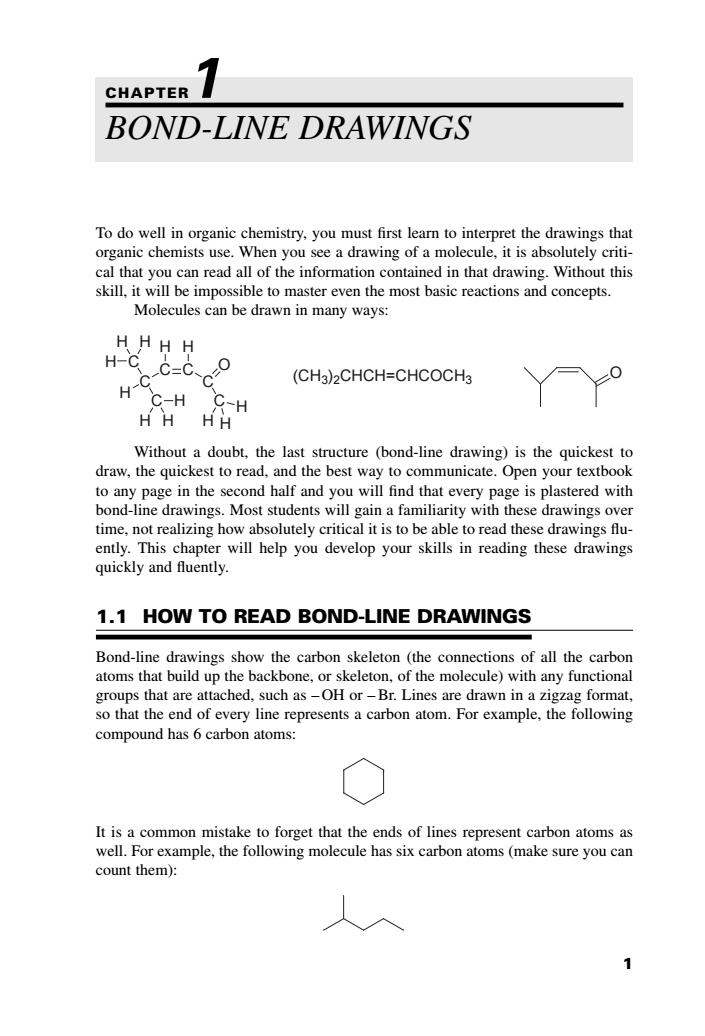正在加载图片...

CHAPTER BOND-LINE DRAWINGS To do well in organic chemistry.you must first learn to interpret the drawings that you see a drawing of a molecule it is absolutely riti cal that you can read all of the information contained in that drawing.Without this skill,it will be impossible to master even the most basic reactions and concepts. Molecules can be drawn in many ways: HHHH H-CC=C (CH3)2CHCH=CHCOCH3 √0 Without a doubt,the last structure (bond-line drawing)is the quickest to draw.the quickest to read.and the best way to communicate.Open your textbook ond half and ou will find that every e is plastered with neMot studentswl ain a faiiarity w ese drawings over time,not realizing how absolutely critical it is to be able to read these drawings flu- ently.This chapter will help you develop your skills in reading these drawings quickly and fluently. 1.1 HOW TO READ BOND-LINE DRAWINGS Bond-line drawings show the carbon skeleton(the connections of all the carbor atoms that build up the backbone of the molecule) with ny functiona groups that are atta hed.,such asOH orBr Lines are drawn nformar so that the end of every line represents a carbon atom.For example,the following compound has 6 carbon atoms: It is a common mistake to forget that the ends of lines represent carbon atoms as well.For example,the following molecule has six carbon atoms(make sure you can count them): To do well in organic chemistry, you must first learn to interpret the drawings that organic chemists use. When you see a drawing of a molecule, it is absolutely critical that you can read all of the information contained in that drawing. Without this skill, it will be impossible to master even the most basic reactions and concepts. Molecules can be drawn in many ways: Without a doubt, the last structure (bond-line drawing) is the quickest to draw, the quickest to read, and the best way to communicate. Open your textbook to any page in the second half and you will find that every page is plastered with bond-line drawings. Most students will gain a familiarity with these drawings over time, not realizing how absolutely critical it is to be able to read these drawings fluently. This chapter will help you develop your skills in reading these drawings quickly and fluently. 1.1 HOW TO READ BOND-LINE DRAWINGS Bond-line drawings show the carbon skeleton (the connections of all the carbon atoms that build up the backbone, or skeleton, of the molecule) with any functional groups that are attached, such as – OH or – Br. Lines are drawn in a zigzag format, so that the end of every line represents a carbon atom. For example, the following compound has 6 carbon atoms: It is a common mistake to forget that the ends of lines represent carbon atoms as well. For example, the following molecule has six carbon atoms (make sure you can count them): C C (CH3)2CHCH=CHCOCH3 O H H C C H C HH H H H H C O C H H H 1 CHAPTER1 BOND-LINE DRAWINGS 6753_Klein_01.qxd 5/1/07 5:03 PM Page 1